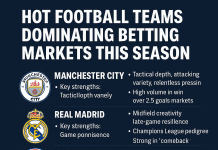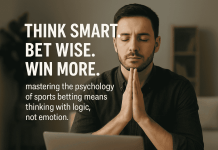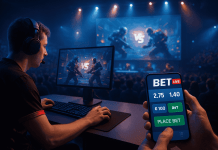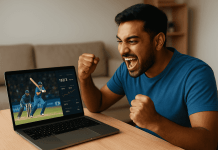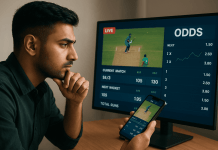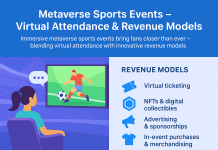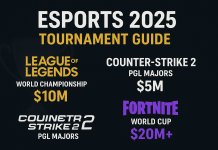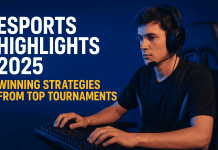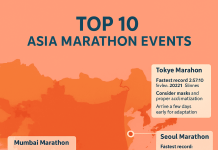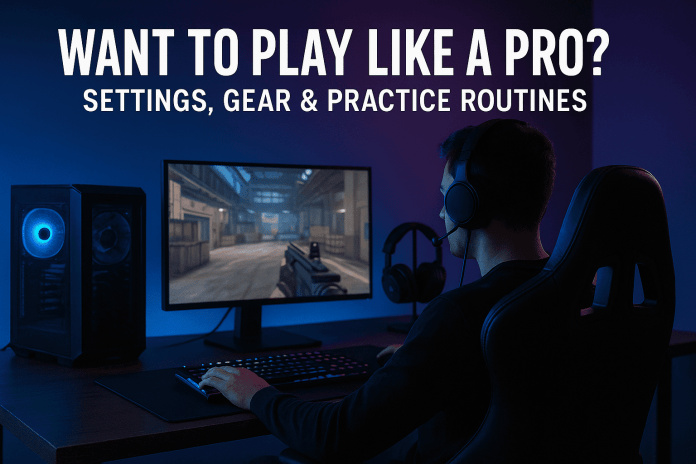
Want to Play Like a Pro? Settings, Gear & Practice Routines
Esports has grown from a niche hobby to a global phenomenon, and the gap between casual players and professionals has never been more defined. Yet, the good news is that with the right settings, gear, and practice habits, you can significantly boost your performance — no matter your starting point.
This guide is written by esports experts who’ve studied pro players’ strategies, interviewed competitive gamers, and analyzed performance trends. Whether you want to dominate in FPS, MOBAs, or battle royales, here’s how to set yourself up for victory.
Optimize Your Game Settings for Maximum Performance
One of the biggest differences between amateurs and pros isn’t just reaction time — it’s precision optimization. Pro players understand that every setting impacts performance.
Graphics & Performance
- Prioritize FPS over aesthetics – Lower unnecessary visual effects like motion blur, bloom, and high shadows to ensure smoother gameplay.
- Resolution & refresh rate – Play at your monitor’s native resolution but ensure a high refresh rate (144Hz or higher) for responsiveness.
- Field of View (FOV) – Adjust for better awareness without distorting your aim. Many pros prefer between 100–110 in FPS titles.
Control Settings
- Sensitivity – Use a sensitivity that allows both quick flicks and precise aiming. Many pros settle between 400–800 DPI with in-game sensitivity tuned for muscle memory.
- Keybinds – Bind actions to easily accessible keys; comfort and speed matter more than tradition.
Gear That Makes a Difference
You don’t need the most expensive hardware, but quality gear tailored to your style can improve consistency and reduce fatigue.
The Essentials
- Mouse – Lightweight, with a high-quality sensor. Wireless mice are now as fast as wired ones.
- Keyboard – Mechanical switches with low actuation force for faster inputs.
- Monitor – At least 144Hz refresh rate and low input lag.
- Headset – High-clarity audio to detect footsteps and environmental cues.
Comfort & Ergonomics
- Invest in a good gaming chair for posture support.
- Use a mousepad large enough for your full arm range of motion.
- Proper desk height and monitor position reduce strain during long sessions.
Practice Routines that Build Pro-Level Skills
Talent helps, but discipline wins championships. Pro players follow structured practice routines to improve mechanics, strategy, and mental resilience.
Warm-Up Before Every Session
- Aim trainers (like Aim Lab or Kovaak’s) for FPS titles.
- Custom lobbies for map familiarization in MOBAs.
Focused Skill Drills
- Spend 20–30 minutes on one weakness per session.
- Use repetition to build muscle memory.
Review & Learn
- Watch your replays to analyze mistakes.
- Study pro players’ streams or match VODs to understand positioning, decision-making, and team communication.
Mental Preparation & Game Mindset
The mental side of esports is often overlooked, but pros know it’s just as important as mechanics.
Stay Calm Under Pressure
- Practice deep breathing to regulate stress during intense moments.
- Focus on the next play, not the last mistake.
Build Endurance
- Take breaks every hour to avoid burnout.
- Hydrate and maintain healthy snacks for sustained focus.
Common Pitfalls to Avoid
- Over-reliance on gear – The best mouse in the world won’t help without solid fundamentals.
- Ignoring health – Long hours without breaks can lead to fatigue and injuries.
- Copying pros blindly – Use pro strategies as a guide, but adapt them to your playstyle.
Action Plan – From Casual to Competitive
- Audit your current setup – Identify weak points in settings, gear, and posture.
- Set a practice schedule – Consistency beats random long sessions.
- Track your progress – Record results weekly to stay motivated.
Final Thoughts
Becoming “pro-level” isn’t about spending thousands on gear or playing all night. It’s about precision optimization, deliberate practice, and a healthy mindset. With consistent improvement in settings, equipment choices, and training routines, you’ll notice a transformation in your performance — and maybe even find yourself competing at a higher level than you ever imagined.
Frequently Asked Questions (FAQ)
Q1: How many hours a day do pro gamers practice?
Most pros practice 6–8 hours daily, but for beginners, 2–4 hours of focused training can bring big improvements.
Q2: Do I need a gaming PC to get better?
Not necessarily, but a stable system with consistent FPS helps ensure your skill isn’t limited by hardware.
Q3: Can console players compete with PC players?
Yes, in certain titles with cross-play. However, mouse and keyboard still offer precision advantages in most genres.
Q4: How long does it take to see results from practice routines?
You can see noticeable improvements in as little as 2–3 weeks with consistent, targeted training.
Q5: Are expensive gaming chairs worth it?
If you play for long hours, ergonomic chairs can prevent back pain and improve long-term health.
